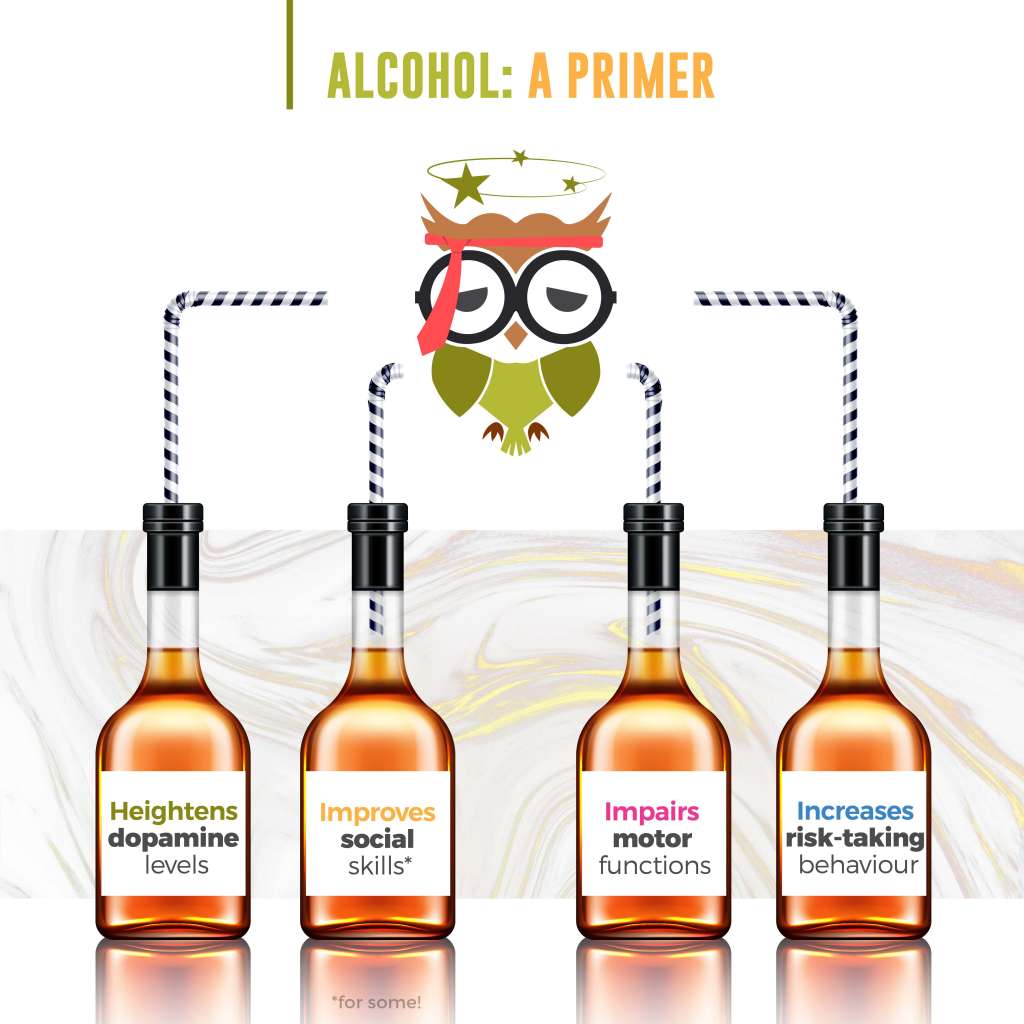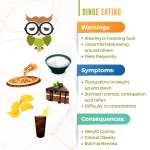Alcohol: A Primer
Get the facts here and the booze elsewhere!
A contentious topic in the nutrition industry: Alcohol. It’s an addiction, a hindrance, an inhibitor of sense and yet, it’s a pleasure, a social convention and an aggregator of sensations.
| Did you know? When water was unsafe to consume in Europe, alcohol proved to be a better option for hydration! |

Why do we drink?
For a multitude of reasons! They’re not just excuses to get sloshed, people. We’re talking about actual scientific facts here.
Let’s get serious.
The primary factor that causes humans to consume alcohol is dopamine. When you drink alcohol, it increases the flow of dopamine, which in turn stimulates the pleasure and reward center of the brain. The direct correlation of drink = reward is as simple as it gets.
| Did you know? Young adults who love sugar have a predisposition towards alcohol, and are more prone to getting addicted to it. |
Other factors that incentivise us to drink alcohol include:
- appealing taste
- stress relief
- loosens inhibitions
- social courtesy
- assists sleep
How does drinking affect us?
Although we humans consume for recreation, alcohol is a toxic substance that can cause a lot of damage to our bodily functions. The toxic-flusher of our bodies – the liver is the organ that is particularly sensitive to alcohol intake.
Fatty liver is a common occurrence in those who drink more than 15ml of alcohol per day. While this doesn’t show symptoms and is reversible, binge drinking and excessive alcohol consumption leads to inflamed liver, or worse, cirrhosis.
Physiologically, when we drink we lose control of our inhibitions. Yes, this makes socialising easier but it also increases and encourages risk-taking behaviour.
| The World Health Organization estimated that over 3 million people die every year due to alcohol consumption. This constitutes 5% of all deaths! |
When does drinking become an addiction?
The simple drink = reward correlation we spoke of earlier? Both a blessing and a bane, an excessive increase in dopamine levels is an addictive factor. Further, alcohol acts on the prefrontal cortex which reduces our inhibitory control and amps up our risk-taking behaviour. These coupled with pre-existing addiction tendencies, lifestyle, environment and company all play a role in creating an alcohol addiction.
We’ve covered the why, the how, and the when. It’s now time for the what.
What can you drink?
Leaving aside the physiological and psychological effects of alcohol we’ve outlined above, there’s sure to be times when you do indulge in a sip (or glass) (or bottle) of alcohol. Here’s what you can do to minimise the impact.
Lay. Off. The. Cocktails.
Cocktails, margaritas, fancy shots – therein lies the path of sugaryness. It’s ideal if you stick to hard liquor and a mixer (water, soda or ice). Do make sure to curtail the number of drinks and keep hydrated throughout.
So that’s the high and low of it all. We are not in the business of morals, ethics or sanctity. You’ve read the science, now it’s time for you to make the choices that work for your lifestyle!
Cheers and see you soon,
![]()
References
- https://www.wdl.org/en/item/3956/
- Kampov-Polevoy, Alexey, et al. “Sweet-Liking Is Associated with Transformation of Heavy Drinking into Alcohol-Related Problems in Young Adults with High Novelty Seeking.” Alcoholism: Clinical and Experimental Research, vol. 38, no. 7, 2014, pp. 2119–2126., doi:10.1111/acer.12458.
- Crabb, David W. “Pathogenesis of Alcoholic Liver Disease. Newer Mechanisms of Injury.” The Keio Journal of Medicine, vol. 48, no. 4, 1999, pp. 184–188., doi:10.2302/kjm.48.184.
- Bergheim, Ina, et al. “Treatment of Alcoholic Liver Disease.” Digestive Diseases, vol. 23, no. 3-4, 2005, pp. 275–284., doi:10.1159/000090175.



